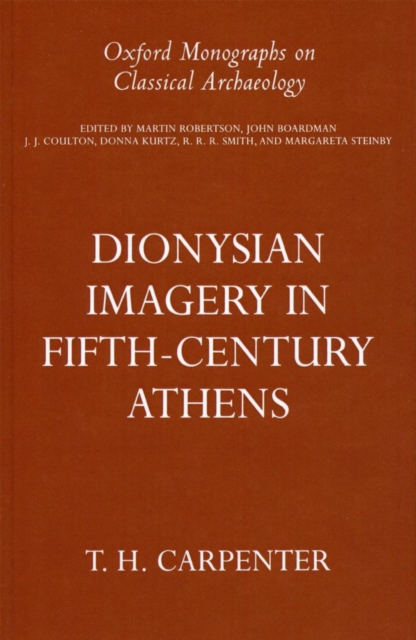
Dionysian Imagery in Fifth-Century Athens Hardback
by Thomas H. (Professor of Art History, Professor of Art History, Virginia Polytechnic Insti Carpenter
Part of the Oxford Monographs on Classical Archaeology series
Hardback
Description
Dionysian Imagery in Fifth-Century Athens is a response to the question, `What can surviving visual sources reveal about fifth-century Attic perceptions of Dionysos?' In this sequel to his book Dionysian Imagery in Archaic Greek Art (1986), Thomas Carpenter defines a methodology for using ancient Greek imagery as evidence for cultural and religious activity based on an empirical rather than theoretical approach.
Red-figure vases provide the richest source of Dionysian iconography, but the significant volume of evidence supplied by architectural sculpture, coins, and the theatre also demands attention.
The conclusions that Carpenter draws from his extensive study challenge commonly-held views about the meaning of Dionysian imagery: women depicted with the god in red-figure vase scenes are demonstrated to be semi-divine nymphs rather than human `maenads' and cannot be seen as evidence for maenadic practices in Attic cults; although many fifth-century depictions are mock-heroic, the Dionysos of the comic theatre is never represented, nor is the god ever dressed in feminine clothing.
It is also argued that the introduction of accessories associated with ecstatic worship in Dionysian scenes can be explained with reference to narratives rather than attributed to cult practices.
While seeking to unravel the important social and cultural implications of this religious imagery, Carpenter takes care to point out the problems inherent in the evidence available for scrutiny.
Information
-
Out of stock
- Format:Hardback
- Pages:170 pages, frontispiece, 48 pp plates
- Publisher:Oxford University Press
- Publication Date:30/01/1997
- Category:
- ISBN:9780198150381
Information
-
Out of stock
- Format:Hardback
- Pages:170 pages, frontispiece, 48 pp plates
- Publisher:Oxford University Press
- Publication Date:30/01/1997
- Category:
- ISBN:9780198150381










